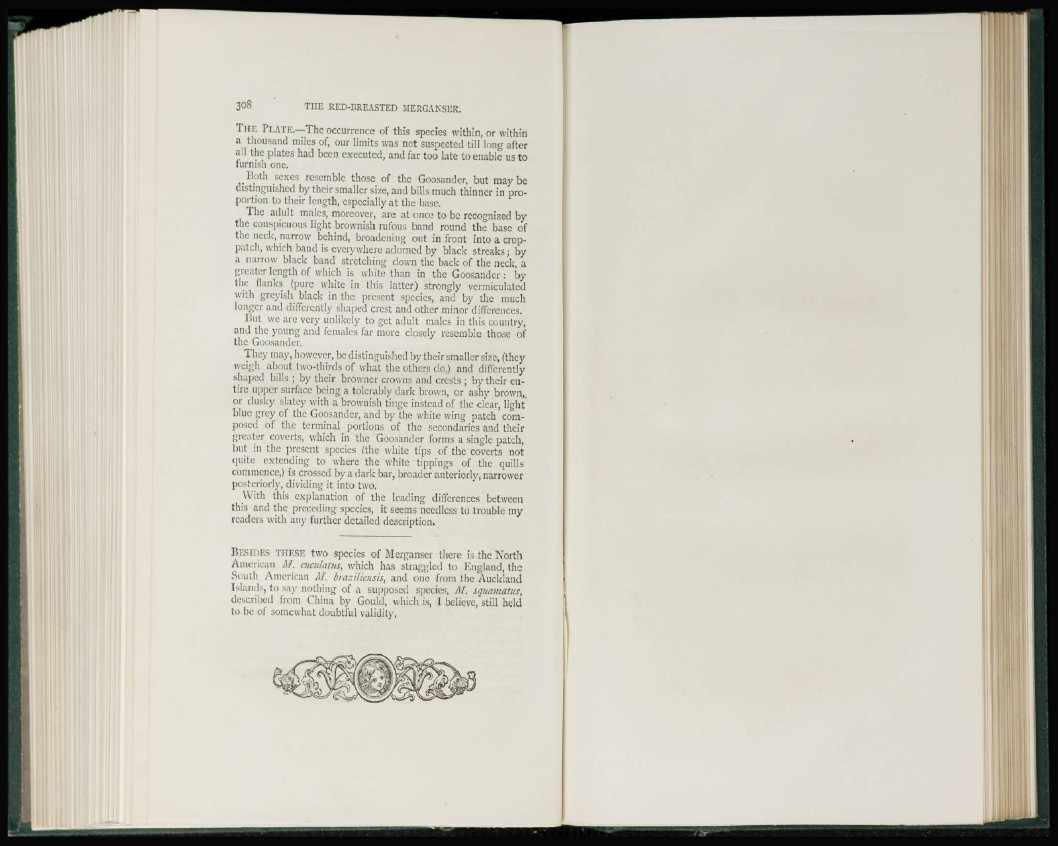
308 THE RED-BREASTED MERGANSER.
THE PLATE.—The occurrence of this species within, or within
a thousand miles of, our limits was not suspected till long after
all the plates had been executed, and far too late to enable us to
furnish one.
Both sexes resemble those of the Goosander, but may be
distinguished by their smaller size, and bills much thinner in proportion
to their length, especially at the base.
The adult males, moreover, are at once to be recognized by
the conspicuous light brownish rufous band round the base of
the neck, narrow behind, broadening out in front into a croppatch,
which band is everywhere adorned by black streaks; by
a narrow black band stretching down the back of the neck, a
greater length of which is white than in the Goosander: by
the flanks (pure white in this latter) strongly vcrmiculated
with greyish black in the present species, and by the much
longer and differently shaped crest and other minor differences.
But we are very unlikely to get adult males in this country,
and the young and females far more closely resemble those of
the Goosander.
They may, however, be distinguished by their smaller size, (they
weigh about two-thirds of what the others do,) and differently
shaped bills; by their browner crowns and crests ; by their entire
upper surface being a tolerably dark brown, or ashy brown,,
or dusky slatey with a brownish tinge instead of the clear, light
blue grey of the Goosander, and by the white wing patch composed
of the terminal portions of the secondaries and their
greater coverts, which in the Goosander forms a single patch,
but in the present species (the white tips of the coverts not
quite extending to where the white tippings of the quills
commence,) is crossed by a dark bar, broader anteriorly, narrower
posteriorly, dividing it into two.
With this explanation of the leading differences between
this and the preceding species, it seems needless to trouble my
readers with any further detailed description.
BESIDES THESE two species of Merganser there is the North
American M. cuculatus, which has straggled to England, the
South American M. braziltensis^ and one from the Auckland
Islands, to say nothing of a supposed species, M. squamatits,
described from China by Gould, which is, I believe, still held
to be of somewhat doubtful validity,